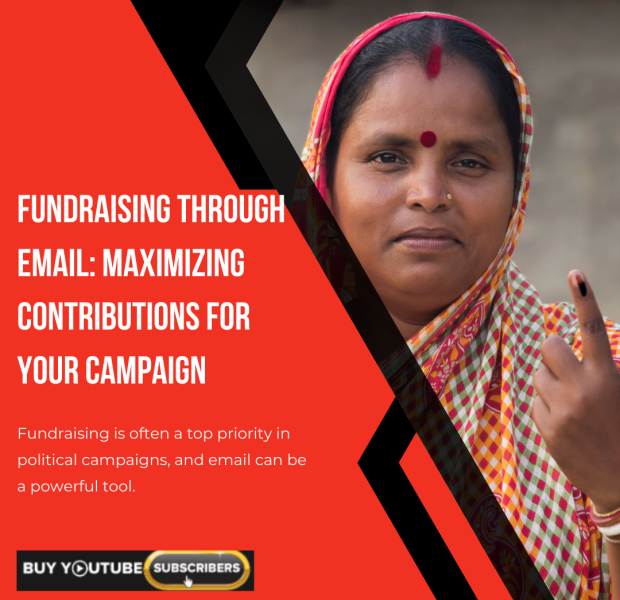Introduction to Email Marketing for Political Campaigns
Today’s communication is crucial for any political campaign in today’s digital landscape. Email marketing stands out as a powerful tool for political campaigns, enabling candidates to connect directly with voters, disseminate key information, and mobilize supporters. At our company, we recognize the unique advantages that email marketing offers, allowing campaigns to build relationships, drive engagement, and achieve their goals.
Unlike traditional, prohibitively expensive advertising methods, political email marketing allows campaigns to reach large audiences with minimal investment. Even candidates with limited budgets can effectively communicate their messages and rally support. Furthermore, email allows for segmentation; campaigns can tailor their messages based on demographics, interests, and past interactions, ensuring that each voter receives relevant information that resonates with them.
Additionally, email marketing fosters a two-way communication channel. Voters can respond, ask questions, or express their concerns, providing campaigns with invaluable feedback. This interaction strengthens voter relationships and allows candidates to adapt their messaging based on real-time insights. In an era where authenticity and connection matter more than ever, leveraging email marketing can significantly enhance a campaign and impact.
Importance of Email Marketing for Political Campaigns
Email marketing is not just a trend; it’s an essential component of modern political strategy. This approach allows campaigns to reach their audience with tailored messages, fostering a sense of community and urgency. Our company segments the audience to ensure each email resonates with its recipients. This targeted communication helps build trust and loyalty, ultimately translating into voter turnout.
This targeted communication not only enhances engagement but also builds trust and loyalty. When voters receive relevant information that addresses their needs and values, they are more likely to feel connected to the campaign. This connection is crucial in translating online engagement into real-world actions, such as attending events or casting their votes.
Moreover, email service for political campaigns offers campaigns the ability to craft compelling narratives highlighting key issues, candidate values, and upcoming events. Campaigns can further strengthen their relationship with voters by sharing success stories and testimonials. In this way, campaign email marketing serves as a vital tool for increasing voter turnout, driving home the importance of participation in the democratic process. Ultimately, campaigns that effectively harness the power of email marketing are better positioned to achieve their objectives and make a lasting impact.
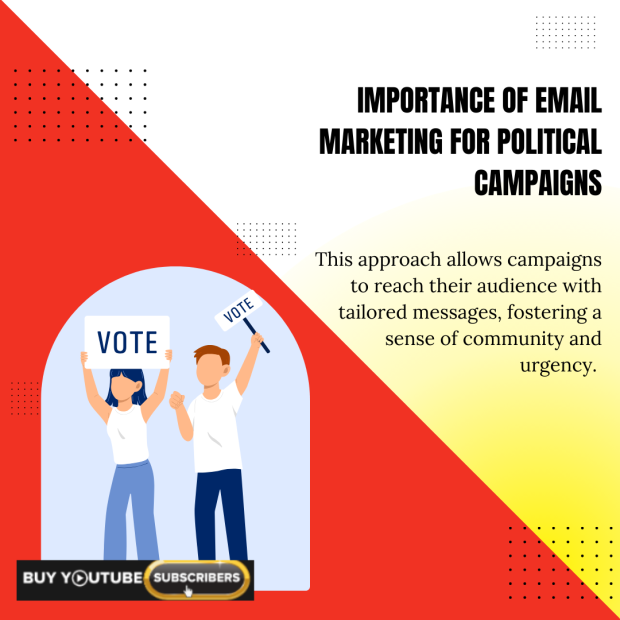
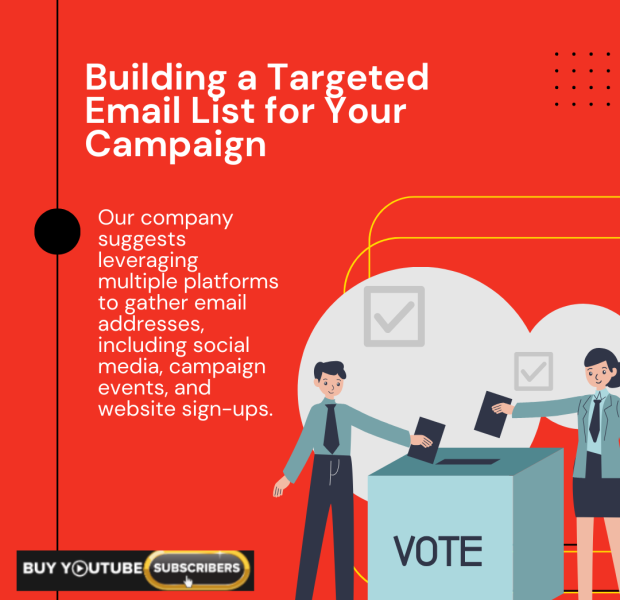
Building a Targeted Email List for Your Campaign
Building a robust email list is one of the foundational steps in email marketing for political campaigns. Our company suggests leveraging multiple platforms to gather email addresses, including social media, campaign events, and website sign-ups. Engaging content, such as informative newsletters or exclusive insights, can incentivize individuals to join your mailing list. Remember, a targeted list enhances your campaign’s effectiveness and engagement rates.
Additionally, it is crucial to create a user-friendly sign-up form on your campaign website. Ensure that iit’sprominently displayed and easy to complete. Engaging content, such as informative newsletters, exclusive insights, or behind-the-scenes looks at your campaign, can incentivize individuals to join your mailing list. Consider offering downloadable resources, like a voter guide or campaign manifesto, in exchange for email sign-ups.
Remember, a targeted list enhances your campaign’s effectiveness and engagement rates. Segmenting your audience based on demographics, interests, or previous interactions allows you to send tailored messages that resonate more deeply with each recipient. This approach fosters a sense of community and increases the likelihood of converting subscribers into active supporters.
Crafting Effective Political Campaign Emails
Creating compelling emails is vital for capturing the attention of your audience. Our team advises focusing on clear messaging, a strong call to action, and visually appealing designs. Personalization is critical—addressing recipients by name and tailoring content to their interests can significantly improve open rates. In email marketing for political campaigns, your emails should inform and inspire action.
A strong call-to-action (CTA) is equally essential. Whether you want recipients to donate, attend an event, or share your message, make sure the CTA is prominent and persuasive. Use action-oriented language that encourages an immediate response, such as “Join us today” or “Make your voice heard.”Visual appeal also plays a crucial role. Incorporating engaging images, infographics, or videos can enhance the overall impact of your message.
Personalization is key in fostering a connection with your audience. Highlight issues that matter most to them and relate how your campaign addresses these concerns.
Ultimately, your emails should inform and inspire action. By crafting messages that resonate with your audience on an emotional and intellectual level, you can drive greater engagement and support for your campaign.

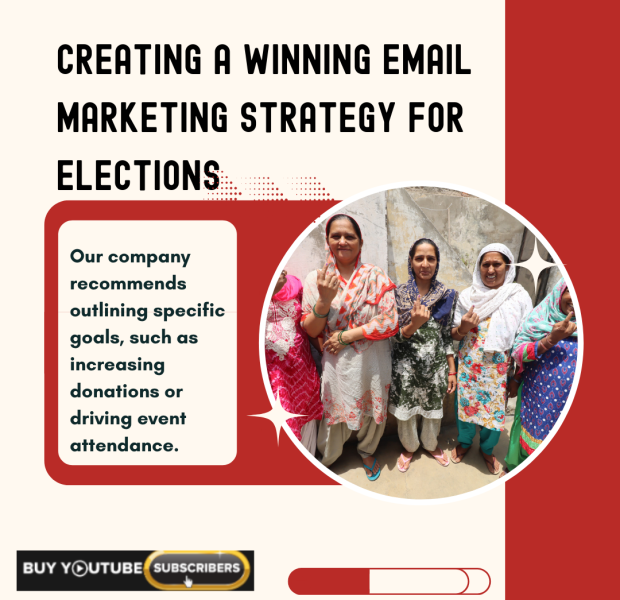
Creating a Winning Email Marketing Strategy for Elections
Our company recommends outlining specific goals, such as increasing donations or driving event attendance. Utilizing a mix of content types—updates, testimonials, and calls for action—can keep your audience engaged. Consistency in messaging and branding ensures that every email reflects your campaign’s identity.
Sharing testimonials from constituents or influential figures can build credibility and connect emotionally with your audience. Additionally, including clear calls to action—whether to donate, volunteer, or attend an event—ensures that each email drives engagement and encourages recipients to take specific steps.
Consistency in messaging and branding is also essential. Every political campaign email should reflect your campaign’s identity, from the tone and language used to the design elements. This consistency helps reinforce your message and builds brand recognition, making it easier for voters to identify and connect with your campaign.
Analyze open, click-through, and conversion rates to understand what resonates with your audience. By responding to this data, you can refine your approach and create a winning political email marketing strategy that effectively mobilizes support during the election cycle. For more detailed guidance on creating effective email campaigns, see Getting Started with Campaigns.”
Tracking Email Campaign Performance: Key Metrics to Monitor
It’s essential to track performance to optimize your campaign email marketing efforts. Our team advises monitoring key metrics such as open rates, click-through rates, and conversion rates. These indicators can provide insights into what’s working and what needs improvement. Analyzing this data allows campaigns to refine their strategies and enhance engagement in future email marketing for political campaigns.
Open Rates
A low open rate may suggest that your subject lines must be more compelling or that your emails are landing in spam folders. Experimenting with different subject lines and sending times can help improve this metric.
Click-Through Rates (CTR)
Click-through rates measure the number of recipients clicking links within your email. If this rate is low, it may be time to reevaluate your messaging or link placement.
Conversion Rates
Conversion rates are the ultimate measure of success. They indicate how many recipients took the desired action after clicking through your email, whether that’s donating, signing up for an event, or volunteering. Tracking this metric helps you assess the effectiveness of your email campaigns in driving specific actions.
Engagement Metrics
Beyond these primary metrics, it’s also helpful to monitor engagement over time. This includes tracking unsubscribe rates and bounce rates. High unsubscribe rates can signal that your content isn’t meeting audience expectations, while bounce rates can indicate issues with your email list quality.
Timing and Frequency: When and How Often to Send Campaign Emails
Timing can make or break an email campaign. Our team suggests analyzing your audience’s behavior to determine optimal send times. Weekdays yield better engagement than weekends. As for frequency, we recommend a balanced approach; too many emails can lead to unsubscribes, while too few may result in disengagement. Striking the right balance is vital in email marketing for political campaigns.
When considering the timing, it’s also essential to consider your audience’s daily routines. For instance, sending emails early in the morning or during lunch hours can capture attention when recipients are more likely to read their messages.
As for frequency, we recommend a balanced approach. Sending too many emails can overwhelm your audience, leading to unsubscribes and decreased engagement. Conversely, sending too few emails may result in disengagement or forgetfulness about your campaign. A good rule of thumb is to aim for consistency—sending regular updates without flooding inboxes.
A bi-weekly newsletter and targeted emails around essential events or fundraising deadlines can be effective. Striking the right balance in timing and frequency is crucial in maintaining audience interest and ensuring your campaign messages are heard loud and clear.
Email service for political campaigns is a powerful tool for reaching voters and mobilizing support. By crafting engaging emails that resonate with your audience, you can effectively communicate your message and drive action.
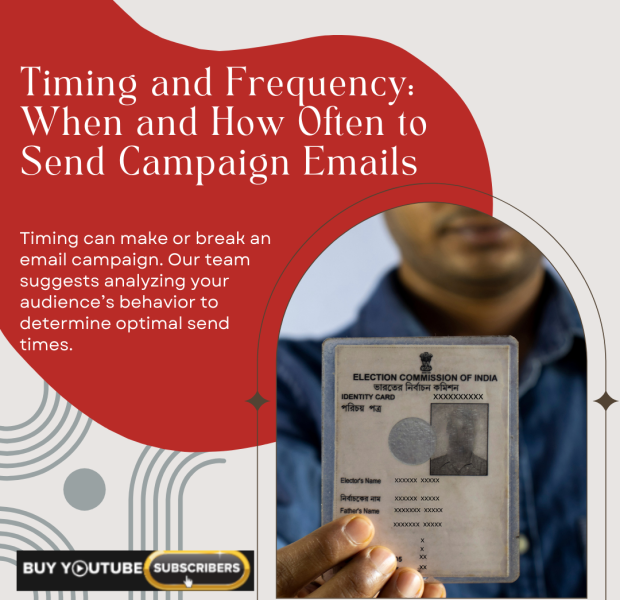
A/B Testing in Political Email Campaigns: What You Need to Know
Our company recommends experimenting with different subject lines and content formats and sending times to see what resonates most with your audience.
What to Test
Our company recommends starting with critical elements that can significantly impact performance:
1. Subject Lines: This is the first impression your audience gets. Test phrasing, lengths, or emojis to see which subject line garners higher open rates.
2. Content Formats: Experiment with varying styles—plain text versus HTML layouts or different content lengths. Assess how these changes affect engagement and click-through rates.
3. Call-to-Action (CTA): Vary your CTA buttons’ wording, placement, or design. An engaging CTA can make a substantial difference in conversion rates.
4. Send Times: Timing can significantly influence how many recipients open and engage with your emails. Test different days of the week and times of day to find your audience’s optimal engagement windows.
Analyzing Results
Once you’ve conducted your tests, analyze the results to identify clear winners. Look at metrics such as open rates, click-through rates, and conversion rates to gauge performance. It’s essential to ensure your sample size is statistically significant to draw valid conclusions.
Continuous Improvement
Regularly testing and iterating your campaigns allows you to adapt to your audience’s changing preferences and improve overall engagement. By making data-driven decisions, you can enhance your email marketing for political campaigns, leading to higher engagement and conversion rates.
Fundraising through Email: Maximizing Contributions for Your Campaign
Fundraising is often a top priority in political campaigns, and email can be a powerful tool. Our company encourages campaigns to craft compelling appeals that highlight the impact of donations. Incorporating stories of voters positively affected by your campaign can evoke emotional responses and drive contributions. Regular updates on fundraising progress can also motivate supporters to give more.
Incorporating stories of voters positively affected by your campaign can evoke emotional responses and deepen connections with potential donors. Personal narratives resonate more than statistics alone; they humanize your campaign and illustrate the real-world effects of contributions. For example, sharing testimonials from individuals whose lives have been improved by your policies can inspire empathy and urgency in your messaging.
Additionally, regular updates on fundraising progress can motivate supporters to contribute. Keeping your audience informed about how close you are to your fundraising goals and celebrating milestones can create a sense of shared achievement.
Consider implementing a solid call-to-action in every fundraising email, making it easy for supporters to donate with just a click. By leveraging the power of storytelling and maintaining open lines of communication, you can maximize contributions and build a solid financial foundation for your campaign.
